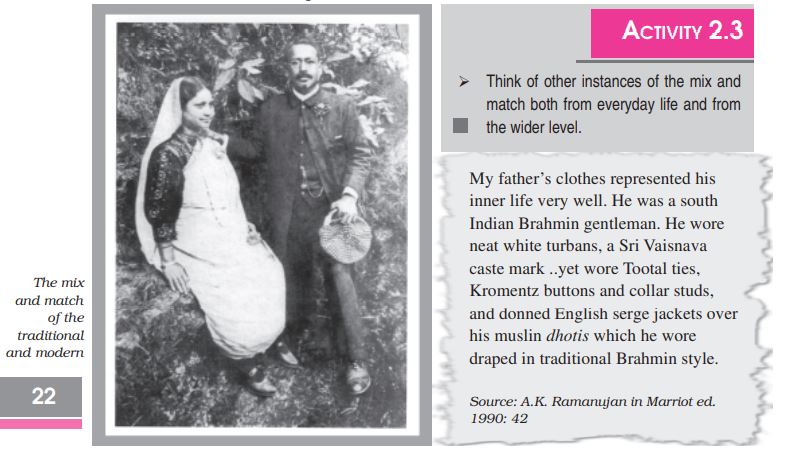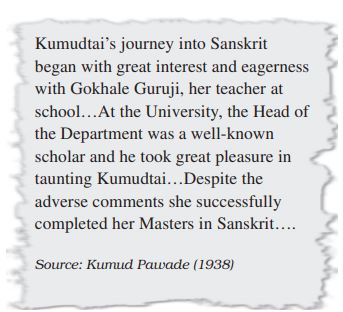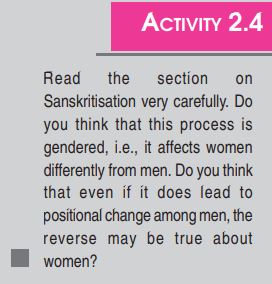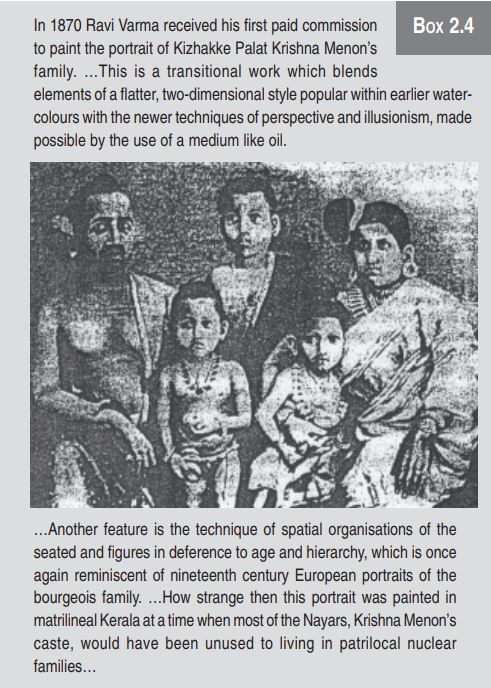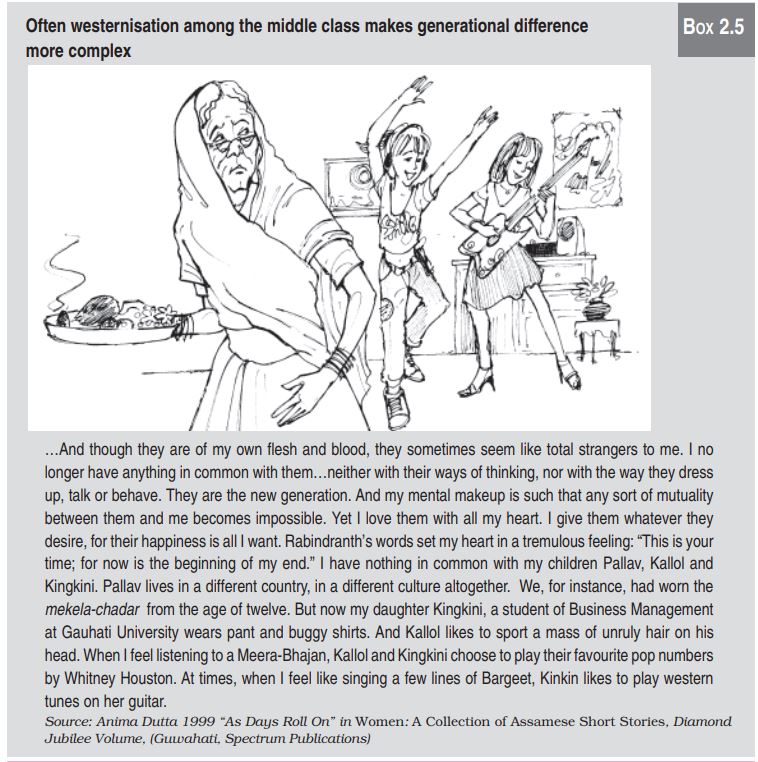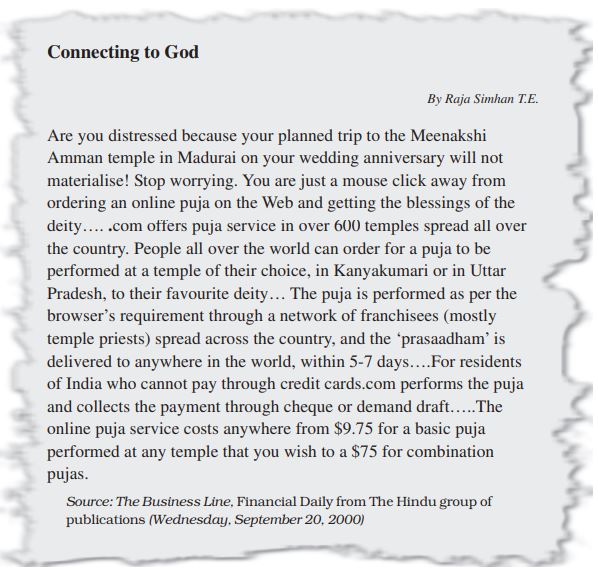Table of Contents

2
Cultural Change
2.1 SOCIAL REFORM MOVEMENTS IN THE 19TH AND EARLY 20TH CENTURY
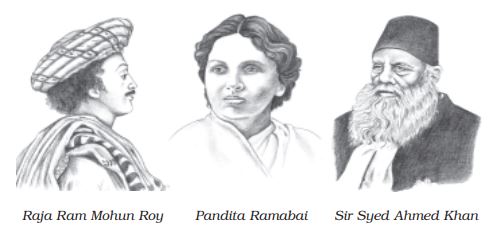
Ram Mohun Roy attacked the practice of sati on the basis of both appeals to humanitarian and natural rights doctrines as well as Hindu shastras.
Ranade’s writings entitled The Texts of the Hindu Law on the Lawfulness of the Remarriage of Widows and Vedic Authorities for Widow Marriage elaborated the shastric sanction for remarriage of widows.
The content of new education was modernising and liberal. The literary content of the courses in the humanities and social sciences was drawn from the literature of the European Renaissance, Reformation and Enlightenment. Its themes were humanistic, secular and liberal.
Sir Sayed Ahmed Khan’s interpretation of Islam emphasised the validity of free enquiry (ijtihad) and the alleged similarities between Koranic revelations and the laws of nature discovered by modern science.
Kandukiri Viresalingam’s The Sources of Knowledge reflected his familiarity with navya-nyaya logic. At the same time he translated Julius Huxley
Sociologist Satish Saberwal elaborates upon the modern context by sketching three aspects to the modern framework of change in colonial India:
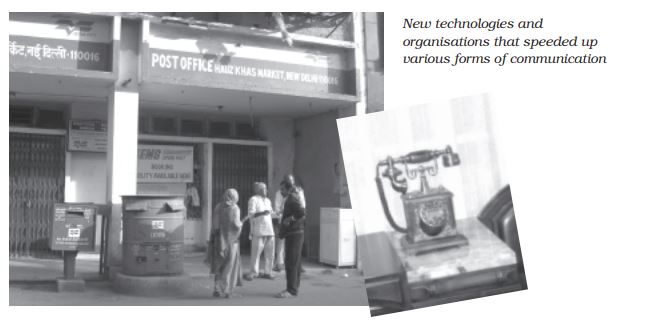
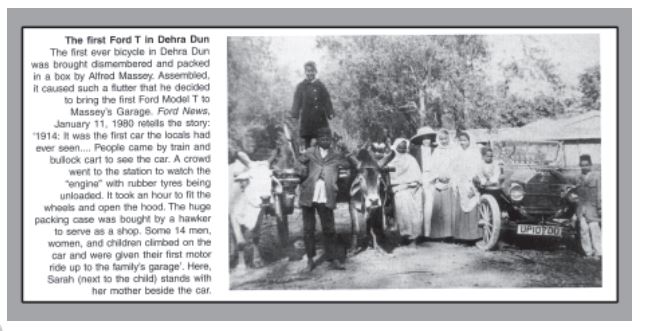
Modern social organisations like the Brahmo Samaj in Bengal and Arya Samaj in Punjab were set up. The All-India Muslim Ladies Conference (Anjuman-E-Khawatn-E-Islam) was founded in 1914. Indian reformers debated not just in public meetings but through public media like newspapers and journals. Translations of writings of social reformers from one Indian language to another took place. For instance, Vishnu Shastri published a Marathi translation of Vidyasagar’s book in Indu Prakash in 1868.
New ideas of liberalism and freedom, new ideas of homemaking and marriage, new roles for mothers and daughters, new ideas of selfconscious pride in culture and tradition emerged. The value of education became very important. It was seen as very crucial for a nation to become modern but also retain its ancient heritage. The idea of female education was debated intensely. Significantly, it was the social reformer Jotiba Phule who opened the first school for women in Pune. Reformers argued that for a society to progress women have to be educated. Some of them believed that in pre-modern India, women were educated. Others contested this on the grounds that this was so only of a privileged few. Thus attempts to justify female education were made by recourse to both modern and traditional ideas. They actively debated the meanings of tradition and modernity. Jotiba Phule thus recalled the glory of preAryan age while others like Bal Gangadhar Tilak emphasised the glory of the Aryan period. In other words 19th century reform initiated a period of questioning, reinterpretations and both intellectual and social growth.
The varied social reform movements did have common themes. Yet there were also significant differences. For some the concerns were confined to the problems that the upper caste, middle class women and men faced. For others the injustices suffered by the discriminated castes were central questions. For some social evils had emerged because of a decline of the true spirit of Hinduism. For others caste and gender oppression was intrinsic to the religion. Likewise Muslim social reformers actively debated the meaning of polygamy and purdah. For example, a resolution against the evils of polygamy was proposed by Jahanara Shah Nawas at the All India Muslim Ladies Conference. She argued:
…the kind of polygamy which is practiced by certain sections of the Muslims is against the true spirit of the Quran…and it is the duty of the educated women to exercise their influence among the relations to put an end to this practice.
Activity 2.1
Find out about some of the social reformers mentioned below? What issues did they fight for? How did they conduct their campaign? Was there any opposition?
Ø Viresalingam
Ø Pandita Ramabai
Ø Vidyasagar
Ø Dayanand Saraswati
Ø Jyotiba Phule
Ø Sri Narayan Guru
Ø Sir Sayed Ahmed Khan
Ø Any othe
The resolution condemning polygamy caused considerable debate in the Muslim press. Tahsib-eNiswan, the leading journal for women in the Punjab, came out in favour of the resolve, but others disapproved. (Chaudhuri 1993: 111). Debates within communities were common during this period. For instance, sati was opposed by the Brahmo Samaj. Orthodox members of the Hindu community in Bengal formed an organisation called Dharma Sabha and petitioned the British arguing that reformers had no right to interpret sacred texts. Yet another view increasingly voiced by Dalits was a complete rejection of the Hindu fold. For instance, using the tools of modern education, Muktabai, a 13 year old student in Phule’s school writes in 1852:
Let that religion
Where only one person is privileged
And the rest are deprived
Perish from this earth
And let it never enter our minds
To be proud of such a religion…
2.2 HOW DO WE APPROACH THE STUDY OF SANSKRITISATION, MODERNISATION, SECULARISATION AND WESTERNISATION
In this chapter each of the four concepts, namely sanskritisation, modernisation, secularisation and westernisation, are dealt with in different sections. But as the discussion unfolds, it will become obvious to you that in many ways they overlap and in many situations they co-exist. In many situations they operate very differently. It is not surprising to find the same person being modern in some ways and traditional in another. This co-existence is often seen as natural to India and many other non-western countries.
But you know that sociology does not rest content with naturalist explanation. (Recall the discussion in chapter 1, Book 1 NCERT 2006) As the last chapter has shown colonial modernity had its own paradoxes. Take the example of western education. Colonialism led to the growth of an English educated Indian middle class. They read the thinkers of western enlightenment, philosophers of liberal democracy and dreamt of ushering in a liberal and progressive India. And yet, humiliated by colonial rule they asserted their pride in traditional learning and scholarship. You have already seen this trend in the 19th century reform movements.
As this chapter will show, modernity spelled not merely new ideas but also rethinking and reinterpretation of tradition. Both culture and tradition are living entities. People learn them and in turn modify them. Take the everyday example of how the sari or jain sem or sarong is worn in India today. Traditionally the sari, a loose unstitched piece of cloth was differently worn in different regions. The standard way that the modern middle class woman wears it was a novel combination of the traditional sari with the western ‘petticoat’ and ‘blouse’.
India’s structural and cultural diversity is self-evident. This diversity shapes the different ways that modernisation or westernisation, sanskritisation or secularisation effects or does not effect different groups of people. The following pages seek to capture these differences. The constraint of space prevents a further detailing out. It is up to you to explore and identify the complex ways modernisation impacts people in different parts of the country or impacts different classes and castes in the same region. And even women and men from the same class or community.
We begin with the concept sanskritisation. The reason for doing so is because it refers to a process that pertains to social mobility that existed before the onset of colonialism. And persisted in diverse ways subsequently. The other three changes as we shall shortly see, arose in a context marked by changes that colonialism brought about. This included direct exposure to modern western ideas of freedom and rights. As mentioned earlier this exposure heightened the sense of injustice on the one hand and humiliation on the other. Often this led to a desire to go back to one’s traditional past and heritage. It is within this mix that we can understand India’s tryst with modernisation, westernisation and secularisation.
2.3 DIFFERENT KINDS OF SOCIAL CHANGE
SANSKRITISATION
The term sanskritisation was coined by M.N. Srinivas. It may be briefly defined as the process by which a ‘low’ caste or tribe or other group takes over the customs, ritual, beliefs, ideology and style of life of a high and, in particular, a ‘twice-born (dwija) caste’.
The impact of Sanskritisation is many-sided. Its influence can be seen in language, literature, ideology, music, dance, drama, style of life and ritual. It is primarily a process that takes place within the Hindu space though Srinivas argued that it was visible even in sects and religious groups outside Hinduism. Studies of different areas, however, show that it operated differently in different parts of the country. In those areas where a highly Sanskritised caste was dominant, the culture of the entire region underwent a certain amount of Sanskritisation. In regions where the non-Sanskritic castes were dominant, it was their influence that was stronger. This can be termed the process of ‘de-Sanskritisation’. There were other regional variations too. In Punjab culturally Sanskritic influence was never very strong. For many centuries until the third quarter of the 19th century the Persian influence was the dominant one.
Srinivas argued that, “the Sanskritisation of a group has usually the effect of improving its position in the local caste hierarchy. It normally presupposes either an improvement in the economic or political position of the group concerned or a higher group selfconsciousness resulting from its contact with a source of the ‘Great Tradition’ of Hinduism such as a pilgrim centre or a monastery or a proselytising sect.” But in a highly unequal society such as India there were and still are obstacles to any easy taking over of the customs of the higher castes by the lower. Indeed, traditionally, the dominant caste punished those low castes, which were audacious enough to attempt it. The story below captures the problem.
Kumud Pawade in her autobiography recounts how a Dalit woman became a Sanskrit teacher. As a student she is drawn towards the study of Sanskrit, perhaps because it is the means through which she can break into a field that was not possible for her to enter on grounds of gender and caste. Perhaps she was drawn towards it because it would enable her to read in the original what the texts have to say about women and the Dalits. As she proceeds with her studies, she meets with varied reactions ranging from surprise to hostility, from guarded acceptance to brutal rejection. As she says:
The result is that although I try to forget my caste, it is impossible to forget. And then I remember an expression I heard somewhere: “What comes by birth, but can’t be cast off by dying - that is caste?”
Sanskritisation suggests a process whereby people want to improve their status through adoption of names and customs of culturally high-placed groups. The ‘reference model’ is usually financially better of. In both, the aspiration or desire to be like the higher placed group occurs only when people become wealthier.
Sanskritisation as a concept has been criticised at different levels. One, it has been criticised for exaggerating social mobility or the scope of ‘lower castes’ to move up the social ladder. For it leads to no structural change but only positional change of some individuals. In other words inequality continues to persist though some individuals may be able to improve their positions within the unequal structure. Two, it has been pointed out that the ideology of sanskritisation accepts the ways of the ‘upper caste’ as superior and that of the ‘lower caste’ as inferior. Therefore, the desire to imitate the ‘upper caste’ is seen as natural and desirable.
Third, ‘sanskritisation’ seems to justify a model that rests on inequality and exclusion. It appears to suggest that to believe in pollution and purity of groups of people is justifiable or all right. Therefore, to be able to look down on some groups just as the ‘upper castes’ looked down on the ‘lower castes’, is a mark of privilege. In society where such a world-view exists, imagining an equal society becomes difficult. The study on the next page shows how the very idea of purity and pollution are valued or seen as worthwhile ideas to have.
Although Goldsmith-castes are people higher than me, our caste rules prohibit our taking food or water from them. We have a belief that Goldsmiths are so greedy that they wash excrement to dig out gold. Although higher in caste, they are therefore, more polluting than we are. We also don’t take food from other higher castes who do polluting things: Washermen, who work with dirty clothes, and Oilpressers, who crush and kill seeds to make oil.
It shows how such discriminatory ideas become a way of life. Instead of aspiring for an equal society, the exclusion and discrimination seek to give their own meaning to their excluded status. In other words they aspire to be in a position from where they can in turn look down on other people. This reflects an essentially undemocratic vision.
Fourth, since sanskritisation results in the adoption of upper caste rites and rituals it leads to practices of secluding girls and women, adopting dowry practices instead of bride-price and practising caste discrimination against other groups, etc.
Fifth, the effect of such a trend is that the key characteristics of dalit culture and society are eroded. For example the very worth of labour which ‘lower castes’ do is degraded and rendered ‘shameful’. Identities based on the basis of work, crafts and artisanal abilities, knowledge forms of medicine, ecology, agriculture, animal husbandry, etc., are regarded useless in the industrial era.
With the growth of the anti-Brahminical movement and the development of regional self-consciousness in the twentieth century there was an attempt in several Indian languages to drop Sanskrit words and phrases. A crucial result of the Backward Classes Movement was to emphasise the role of secular factors in the upward mobility of caste groups and individuals. In the case of the dominant castes, there was no longer any desire to pass for the Vaisyas, Kshatriyas and Brahmins. On the other hand, it was prestigious to be a member of the dominant caste. Recent years have seen likewise assertions of Dalits who now pride their identity as Dalits. However, sometimes as among the poorest and the most marginalised of the dalit caste groups, caste identity seems to compensate their marginality in other domains. In other words they have gained some pride and self-confidence but otherwise remain excluded and discriminated.
WESTERNISATION
You have already read about our western colonial past. You have seen how it often brought about changes that were paradoxical and strange. M.N. Srinivas defines westernisation as “the changes brought about in Indian society and culture as a result of over 150 years of British rule, the term subsuming changes occurring at different levels…technology, institutions, ideology and values”.
There were different kinds of westernisation. One kind refers to the emergence of a westernised sub-cultural pattern through a minority section of Indians who first came in contact with Western culture. This included the sub culture of Indian intellectuals who not only adopted many cognitive patterns, or ways of thinking, and styles of life, but supported its expansion. Many of the early 19th century reformers were of this kind. The boxes show the different kinds of westernisation.
There were, therefore, small sections of people who adopted western life styles or were affected by western ways of thinking. Apart from this there has been also the general spread of Western cultural traits, such as the use of new technology, dress, food, and changes in the habits and styles of people in general. Across the country a very wide section of middle class homes have a television set, a fridge, some kind of sofa set, a dining table and chair in the living room.
BOX 2.2
Ways of thinking …John Stuart Mill’s essay ‘On Liberty’ soon after its publication became a text in Indian colleges. Indians came to know about Magna Carta, and the struggle for liberty and equality in Europe and America.
Box 2.3
ACTIVITY 2.5
Apart from ways of life and thinking the west influenced Indian art and literature. Artists like Ravi Varma, Abanindranath Tagore, Chandu Menon and Bankimchandra Chattopadhya were all grappling with the colonial encounter. The box below captures the many ways that style, technique and the very theme of an artist like Ravi Varma were shaped by western and indigeneous traditions. It discusses the portrait of a family in a matrilineal community of Kerala but one that significantly resembles the very typical patrilineal nuclear family of the modern west consisting of the father, mother and children.
Source: G . Arunima “Face value: Ravi Varma’s portraiture and the project of colonial modernity”. The Indian Economic and Social History Review 40, 1 (2003) pp. 57 - 80)
You can see the many diverse levels that cultural change, resulting from our colonial encounter with the west, took place. In the contemporary context often conflicts between generations are seen as cultural conflicts resulting from westernisation. The following account in the next page captures this gap. Have you seen this or faced this? Is Westernisation the only reason for generational conflicts? Are conflicts necessarily bad?
Srinivas suggested that while ‘lower castes’ sought to be Sanskritised, ‘upper castes’ sought to be Westernised. In a diverse country such as India this generalisation is difficult to maintain. For instance, studies of Thiyyas (by no means considered ‘upper caste’) in Kerala show conscious efforts to westernise. Elite Thiyyas appropriated British culture as a move towards a more cosmopolitan life that critiqued caste. Likewise, Western education often implied opening up to new opportunities for different groups of people in the NorthEast. Read the following account.
Box 2.6
My grandfather, like most Nagas who had come into close contact with Europeans, was convinced that education was the only way to get ahead in life. He aspired for his children the kind of life he had seen being lived by the British administration and missionaries. He sent my mother away to school first in neighbouring Assam, then as far away as Shimla. My mother was encouraged by one of the more educated men in her village who told her that with an education in these new times, she could even become like the Indian lady who spoke before the world- Vijaylakshmi Pandit, sister of Nehru, who represented India at the UN. My father by dint of his own intelligence and hard work put himself through the local mission school and college in Shillong. All Nagas of my parents’ generation who were able to, chose to get educated in English. For them it was more than a getway to upward mobility. In a region where tribes that live no more than 20 kms apart speak completely different languages, it was a medium through which they could communicate amongst themselves and with the world. They became the voice of their people and made English the official state language. (Ao 2005: 111)
We usually refer to the colonial impact to discuss westernisation. However often we find new forms of westernisation in the contemporary period. Activity 2.6 draws attention to this.
ACTIVITY 2.6
Observe the many small and big ways that westernisation affects our lives.
Ø You have already seen how British colonialism affected our lives. How westernisation meant emulating or wanting to be like the British. Increasingly we find westernisation being more Americanisation. Read a recent letter to the editor of a newspaper given below and discuss.
The new Raj
Presumably to set itself apart from the Continent, Britain and Ireland, from where its founders had come, the US chose to partly reverse the date-month-year format and create its own month-date-year one. …The 11 th of September, the day of the attack on the World Trade Centre in New York, automatically became “9/11”. As this was the shorthand which the US used, the rest of the world used it too, never mind that in most countries the number of a month in a year follows that of a day in a month. How do we explain the fact that the shorthand used in the Mumbai train blasts is “7/11”? We were a British colony, so we mostly use the DD-MM-YY format…
The Hindu August 21, 2006.
At one time many Indians sought to speak English the British way. Has there been a change in this? Is American accent more influential now?
MODERNISATION AND SECULARISATION
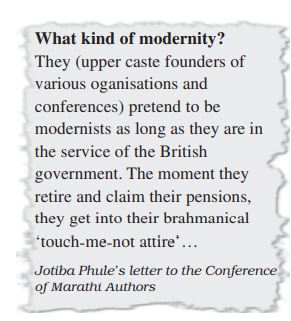
‘[M]odernity’ assumes that local ties and parochial perspectives give way to universal commitments and cosmopolitan attitudes; that the truths of utility, calculation, and science take precedence over those of the emotions, the sacred, and the non-rational; that the individual rather than the group be the primary unit of society and politics; that the associations in which men live and work be based on choice not birth; that mastery rather than fatalism orient their attitude toward the material and human environment; that identity be chosen and achieved, not ascribed and affirmed; that work be separated from family, residence, and community in bureaucratic organisation….(Rudolph and Rudolph, 1967)
In other words it means that people are influenced not just by local but universal contexts. How you behave, what you think is no longer decided by your family or tribe or caste or community. What job you wish to do is decided not by the job your parent does, but by what you wish to do. Work gets based on choice, not birth. On whom you are depend on what you achieve, not by who you are. A scientific attitude gains ground. A rational approach matters. Is this entirely true?
ACTIVITY 2.7
Take any matrimonial column from any newspaper or websites like shaadi.com and try and see the pattern. How often is caste or community mentioned? If it is mentioned many times does it mean that caste continues to play the same kind of role as it did traditionally? Or has the role of caste changed? Discuss.
In India often the job we do is not by choice. A scavenger does not choose his/her job. (chapter 5 book 1, NCERT 2007) We often marry within a caste or community. Religious beliefs continue to dominate our lives. At the same time we do have a scientific tradition. We also have a vibrant secular and democratic political system. At the same time we have caste and community based mobilisation. How do we understand these processes? This chapter has been trying to understand this mix.
Box 2.7
With the advent of progress and the influences of modernisation, attitudes have changed to religion and to the celebration of the many festivals. Rituals, procedures of ceremonies, taboos associated with these ceremonies, the value and amount of sacrifices to be made, are now all subjects of constant change, especially in the mushrooming urban areas.
These new pressures on the concept of tribal identity have meant that traditional practices and their preservation have become almost a necessary expression of being tribal. Festivals have emerged as an emphatic projection of that sense of a unified tribe identity. It is as if the collective celebration of the festival has become a fitting response to the clarion call of ‘Loss of Culture, Loss of Identity’ that is doing the rounds in today’s tribal society
It is currently a common practice for Festival Celebration Committees to be formed in place of the Traditionally loose-knit work gang for the celebration of the festival. Traditionally, seasonal cycles determined the days of the celebration; now dates for the celebration have been formalised with each marked on the official government calendar.
At these festival celebrations, flags of no definite design, chief guests and speeches, and Miss Festival contests have become the new necessities. With rational concepts and worldviews infiltrating the minds of the tribal people, the practice and performance of the old faith is under due and undue scrutiny.
In the modern west, secularisation has usually meant a process of decline in the influence of religion. It has been an assumption of all theorists of modernisation that modern societies become increasingly secular. Indicators of secularisation have referred to levels of involvement with religious organisations (such as rates of church attendance), the social and material influence of religious organisations, and the degree to which people hold religious beliefs. Recent years have, however, seen an unprecedented growth of religious consciousness and conflict world over.
However even in the past, a view that assumed that modern ways would necessarily lead to decline in religious ways has not been entirely true. You will recall how western and modern forms of communication, organisation and ideas led to the emergence of new kinds of religious reform organisations. Furthermore, a considerable part of ritual in India has direct reference to the pursuit of secular ends.
Rituals have also secular dimensions as distinct from secular goals. They provide men and women with occasions for socialising with their peers and superiors, and for showing off the family’s wealth, clothing and jewellery. During the last few decades in particular, the economic, political and status dimensions of ritual have become increasingly conspicuous, and the number of cars lined up outside a wedding house and the VIPs who attended the wedding, provide the index to the household’s standing in the local community.
There has also been considerable debate about what is seen by some as secularisation of caste. What does this mean? In traditional India caste system operated within a religious framework. Belief systems of purity and pollution were central to its practice. Today it often functions as political pressure groups. Contemporary India has seen such formation of caste associations and caste based political parties. They seek to press upon the state their demands. Such a changed role of caste has been described as secularisation of caste. The box below illustrates this process.
Activity 2.8
Observe advertisements during traditional festivals such as Diwali, Durga Puja, Ganesh Puja, Dusserah, Karwa Chauth, Id, Christmas. Collect different advertisements from the print media. Watch the electronic media also. Note what the messages of these advertisements are about.
Box 2.8
Everyone recognises that the traditional social system in India was organised around caste structures and caste identities. In dealing with the relationship between caste and politics, however the doctrinaire moderniser suffers from a serious xenophobia. He begins with the questions: is caste disappearing? Now, surely no social system disappears like that. A more useful point of departure would be: what form is caste taking under the impact of modern politics, and what form is politics taking in a caste-oriented society?
Those in India who complain of ‘casteism in politics’ are really looking for a sort of politics, which has no basis in society. …Politics is a competitive enterprise, its purpose is the acquisition of power for the realisation of certain goals, and its process is one of identifying and manipulating existing and emerging allegiances in order to mobilise and consolidate positions. The important thing is organisation and articulation of support, and where politics is mass-based the point is to articulate support through the organisations in which the masses are to be found. It follows that where the caste structure provides one of the principal organisational clusters along which the bulk of the population is found to live, politics must strive to organise through such a structure.
Politicians mobilise caste groupings and identities in order to organise their power. …Where there are other types of groups and other bases of association, politicians approach them as well. And as they everywhere change the form of such organisations, they change the form of caste as well.
(Kothari 1977: 57-70)
EXERCISE FOR BOX 2.8
CONCLUSION
Questions
1. Write a critical essay on sanskritisation.
2. Westernisation is often just about adoption of western attire and life style. Are there other aspects to being westernised? Or is that about modernisation? Discuss.
3.Write short notes on:
Rites and secularisation
Caste and secularisation
Gender and sanskritisation
References
Ramanujan, A.K. 1990. ‘Is There an Indian Way of Thinking: An Informal essay’ in Marriot McKim India Through Hindu Categories. Sage. New Delhi.
Abraham, Janaki. 2006. ‘The Stain of White: Liasons, memories and White Men as Relatives’ Men and Masculinities. Vol 9. No. 2. pp 131-151.
Ao, Ayinla Shilu. 2005. ‘Where the Past Meets the Future’ in Ed. Geeti Sen Where the Sun Rises When Shadows Fall. IIC Quarterly Monsoon Winter 32, 2&3. pp. 109-112.
Chakravarti, Uma. 1998. Rewriting History: The Life and Times of Pandita Ramabai. Kali for Women. New Delhi
Chaudhuri, Maitrayee. 1993. The Indian Women’s Movement: Reform and Revival. Radiant. New Delhi.
Dutt, A.K. 1993. ‘From Colonial City to Global City: The Far from Complete Spatial Transformation of Calcutta’ in Brunn S.D. and Williams J.F. Ed. Cities of the World. pp. 351-388. Harper Collins. New York.
Khare, R.S. 1998. Cultural Diversity and Social Discontent: Anthropological Studies on Contemporary India. Sage. New Delhi.
Kothari, Rajni. 1997. ‘Caste and Modern Politics’ in Sudipta Kaviraj Ed. Politics in India. pp. 57-70. Oxford University Press. Delhi.
Pandian, M.S.S. 2000. ‘Dalit Assertion in Tamil Nadu: An Exploratory Note’ Journal of Political Economy. Vol XII. Nos. 3 and 4.
Raman, Vasanthi. 2003. ‘The Diverse Life-Worlds of Indian Childhood’ in Margrit Pernau, Imtiaz Ahmad, Helmult Reifeld (Eds), Family and Gender: Changing values in Germany and India. Sage. New Delhi.
Riba, Moji. 2005. “Rites, in passing …” IIC Quarterly Monsoon-Winter 32, 2&3. pp.113-121.
Rudolph and Rudolph. 1967. The Modernity of Tradition: Political Development in India. University of Chicago Press. Chicago.
Saberwal, Satish. 2001. ‘Framework in Change: Colonial Indian Society’ in Ed. Susan Visvanathan Structure and Transformation: Theory and Society in India. pp.33-57. Oxford. Delhi.

